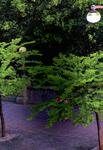3
4




5
6

3
4




5
6



Here are 15 destinations that are great for seniors. Choose from the category that best suits your goals and travel preferences.
Chase the sun


Do you like to travel during the winter to enjoy warm temperatures all year round? You’ll undoubtedly love these countries where the sun is nearly always there to greet you.


Take it easy
If you want to get away from it all, settle into a comfortable routine and enjoy magnificent landscapes, these destinations are for you. Even your own country has hidden gems for you to discover.
8. Spain


9. France
10. Switzerland
Experience something unique
Do you want to enjoy a one-of-a-kind experience unlike anything you’ve ever seen? If you’re looking for a journey out of the ordinary, these destinations won’t disappoint.

11. Galapagos Islands

12. Brazil

13. South Africa
14. Panama

15. Thailand
Each of these destinations offers numerous possibilities for you to enjoy your retirement to the fullest. Visit a travel agency to plan your journey. Don’t forget to take advantage of special offers for seniors.
Do you want to make the most of retirement by seeing the world but aren’t sure where to fly first?
Are you retired or close to retirement and want to plan a memorable trip where every stop along the way has significance? Genealogy tourism, also known as roots tourism, might appeal to you.




Genealogy tourism involves choosing a holiday location linked to your generational past. For example, you could visit a town or country where your ancestors lived before emigrating to your birthplace. The aim is to admire places where former family members lived to learn more about your origins and yourself.
Genealogy tourism is a chance to discover the home country of your ancestors. It’s also an excellent opportunity to learn about the experiences of certain relatives who lived during difficult or historically significant times.

Planning a genealogical trip is more complex than planning a traditional holiday. For example, you may need to meet with a local historian or genealogy expert recommended by your hotel. You can also contact a travel agency to create a personalized trip or use a company that develops themed group trips.
If you prefer going on an unforgettable trip rather than sifting through historical documents to discover your heritage, genealogy tourism is for you. Don’t hesitate to ask for help when planning your trip to the past.

Electrically assisted bicycles (EABs) are becoming increasingly popular, especially among older adults. They have a powerful battery that can cover long distances, battle the wind and climb steep slopes much better than a traditional bike.


Various EAB models may suit your needs depending on how you plan to use them. You can find mountain, road, hybrid and fat bikes with electric assist. Remember that hybrid models are ideal for city riding.
The bike’s battery power determines how far it can travel on a single charge. The greater the battery capacity, the greater the distance the bike can travel without you having to pedal. The range for most electrically assisted bikes is between 19

and 112 miles. Maintaining an EAB is like caring for a regular bicycle, except you may need to have an expert check the electrical system from time to time.
Shopping tips



Electric bikes are often more expensive than their conventional counterparts. While some are more affordable, it’s essential to research the most reliable brands before making a choice. Look for a model with the motor in the crankset for even weight distribution and a smooth ride. This also makes the rear wheel easy to change if you get a flat.
Some electric bicycles are specially designed for older people and include an ergonomic frame, seat and handlebars.


Being able to drive is a key element in maintaining selfsufficiency as we age. You want to be able to visit friends, pop in at the market, pick up prescriptions and take part in social gatherings — all of which are critical to our larger well being.










But among the things that change with age is the experience we have out on the road. It becomes harder to see and hear things clearly, in some cases. It may become more difficult to physically handle operating the vehicle. Memory issues can lead to confusion about the routes there and back home.









Statistics show that older drivers are more apt to commit traffic violations and to get into an accident than those in middle age. Decreased vision, slower reflexes and impaired hearing are often to blame, according to experts. Issues with coordination and flexibility may play a role.


Acknowledge and accept these limitations, then keep a close eye on how you’re doing behind the wheel.
Regular exercise can help ensure that you remain strong and flexible enough to drive.




Visit the doctor as scheduled to maintain both your good health and to monitor key stats that govern your ability to drive. If you wear corrective lenses, make sure the prescription is current and still providing the best possible sightline. Hearing should be regularly checked too; those with hearing aids should always wear them when operating a vehicle. Make sure all of your safety equipment is operational, including windshield wipers, headlights, taillights and mirrors. Turn the lights up in your instrument panel to make it easier to see.


Oftentimes, we know when it’s time to give up the keys, despite how hard that can be. Even with all of these elements in place, seniors may simply lose too much cognitive or physical ability to manage the stress and complexity of driving — in particular in bigcity traffic. If friends or family express concerns, understand that it’s because they love you. There’s no shame in taking responsibility for the safety of yourself and other drivers. Besides, there are some upsides to life without a vehicle: You no longer have to pay a car note, insurance premium or maintenance bills. And walking is one of the very best forms of exercise for seniors.

The challenges pile up, but you can still remain independent
As seniors live longer than ever, their exposure to the sun has only lengthened. So has the incidents of melanoma or skin cancer. But protecting yourself from this everyday danger often comes down to a little preparation before

heading out to that backyard barbecue or beach day.
The Centers for Disease Control found that only 15% of seniors regularly used recommended forms of skin protection. Men were more apt to wear long pants, while women stayed in the shade. Sunburn rates have soared among the senior population, coming in at nearly double the national average. Sunburn, in fact, was reported

across all ethnic and racial groups in the CDC’s study.
Sunscreen is always recommended, but these products are not all alike. Look for lotions with a sunprotection factor (or SPF) or 30 or more. They should also protect you from both UVA and UVB rays. Apply sunscreen roughly half an hour before you expect to be out in the sun, and then reapply throughout the day as pool water,
sweat or ocean currents wash it away.
Dermatologists don’t simply recommend sunscreen. They also stress covering up as much as is possible — in particular for those who are exposed to sun light all day. Seniors should choose lightweight, lightcolored fabrics that are both comfortable and cool. Purchase a widebrimmed hat as well, since it will provide shade for your face and scalp. As many as 20%
of cataracts are caused by extended exposure to UV rays, according to the National Institutes of Health. So, don’t forget some properly rated sunglasses.

Try to schedule your time in the sun for mornings and afternoons. The sun is at its most intense between 10 a.m. and 4 p.m., when it’s extraordinarily easy to overheat or get a sunburn. Seek out shade, either under a tree or tent, in order to


lower the risks. Take breaks while doing yard work or golfing and find a covered area to rest. Immediately find a cool place if you begin to experience heat stress symptoms like dizziness, extreme fatigue, nausea, headaches and cramps. Seek immediate attention from a healthcare professional if someone around you begins to show signs of mental confusion, high heart rate and flushed skin.

The definition of “eating right” is a moving target. What was required to live an active and healthy life as a younger person doesn’t necessarily apply into our golden years. Learning and following these new guidelines will help ensure that you’re ready for what comes next.
The best diets provide energy to complete everyday tasks, while also helping us reach and maintain recommended weight. They’re also help shield us against damaging conditions such as diabetes, high blood pressure, osteoporosis, high blood pressure and heart disease. We need more protein as we age, but fewer calories. So closely following a diet as recommended by a doctor or other healthcare expert becomes more critically important.

The challenges are all around, beginning with poor eating habits developed in younger days when our metabolism was far higher. Seniors sometimes find it hard to drive or to navigate store aisles in order to buy the freshest, healthiest foods.
Those in poor health may have difficulty cooking their own meals, or even feeding themselves. Unfortunately, some medications impact our appetites, alter the way food tastes or make our mouths feel dry. General changes in senses of taste and smell may also impact dietary choices. Some have problems chewing or swallowing their food, as well.
Doctors and dietitians will factor all of that in while discussing your changing nutritional needs. Foods that are highly beneficial without all of those extra calories include vegetables and fruits (the more brightly colored, the better), while grains including oatmeal and brown rice, fat-free or low-fat cheeses, lean meats
and seafood, beans and nuts, and eggs and poultry. It may present the largest challenge, but seniors need to break eating habits involving trans and saturated fats, candy and chips, soda and alcohol and baked goods. Look for foods that are low in bad fats and cholesterol, drink the recommended daily amount of water to remain hydrated and become or stay active.

If you’re having trouble swallowing or chewing, schedule an appointment with your doctor or dentist to determine next steps. Add texture, light spices or color to foods if your sense of smell or taste is diminishing with age. Friends, family or a health-care provider may be required to help. Don’t be afraid to reach out.


